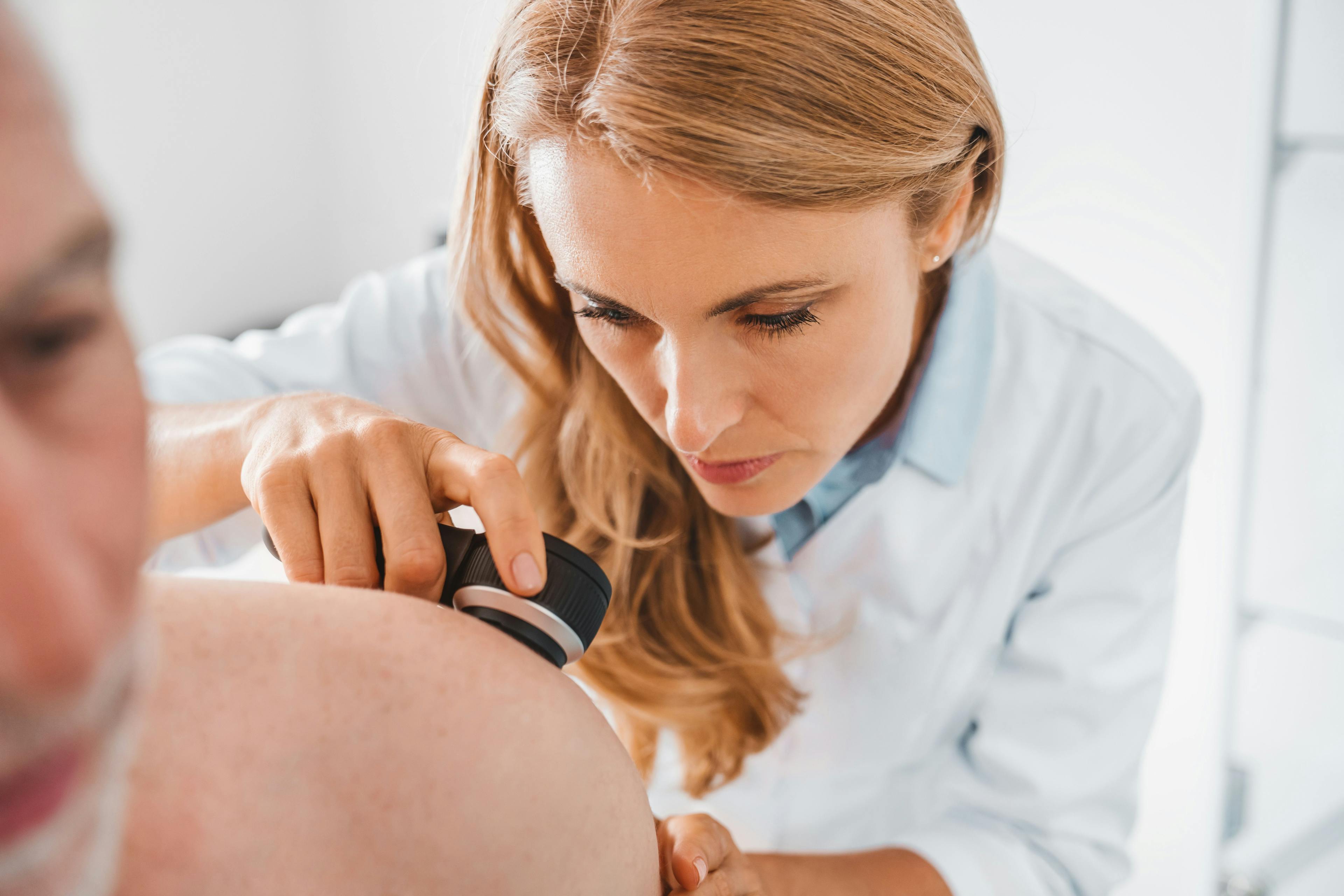- Acne
- Actinic Keratosis
- Aesthetics
- Alopecia
- Atopic Dermatitis
- Buy-and-Bill
- COVID-19
- Case-Based Roundtable
- Chronic Hand Eczema
- Chronic Spontaneous Urticaria
- Drug Watch
- Eczema
- General Dermatology
- Hidradenitis Suppurativa
- Melasma
- NP and PA
- Pediatric Dermatology
- Pigmentary Disorders
- Practice Management
- Precision Medicine and Biologics
- Prurigo Nodularis
- Psoriasis
- Psoriatic Arthritis
- Rare Disease
- Rosacea
- Skin Cancer
- Vitiligo
- Wound Care
News
Article
Dermatology Times
Jenny Murase, MD: Providing Dermatologic Support in Postpartum Care
Key Takeaways
- Dermatologic care for new mothers, especially during lactation, has been historically overlooked, necessitating increased focus and education.
- Differential diagnosis for mastitis includes irritant and allergic contact dermatitis, infections, and Raynaud phenomena, with warming techniques and nifedipine as potential treatments.
Murase discussed safe dermatologic treatments during lactation, especially for chronic conditions needing biologics.
In her second presentation at the 2024 Elevate-Derm West Conference, Jenny Murase, MD, talked about the Dermatologic Care of New Mothers. Her lecture covered important topics such as differential diagnosis, safety of medications, and conditions commonly found in breastfeeding mothers.
TRANSCRIPT
Murase: My name is Dr Jenny Murase, and I am the director of medical consultative dermatology at the Palo Alto Foundation Medical Group, and I'm associate clinical professor at UCSF. I just presented at NP Elevate in Arizona over the past few days on 3 presentations related to women's health and dermatology.
Dermatology Times: What did you cover during your session titled, "Dermatologic Care of New Mothers"?
Murase: I think that lactation is an area where there really, in the past, hasn't been a lot of attention in the field. I remember 18 years ago when I was looking at how to redesign the women's health curriculum for the American Academy of Dermatology, I realized that there was literally no education on new mothers and issues regarding breastfeeding and really even safety of medications and lactation as well. That was definitely an area that I wanted to make sure was addressed at our academy meetings, because it's such a relevant issue for patient care. In the session that I gave, I talked about the differential diagnosis and the things we have to think about when a patient presents with mastitis, meaning inflammation of particularly the areola or nipple when breastfeeding. Those conditions include things like irritant contact dermatitis, allergic contact dermatitis, to things like lanolin, for example, that is in wool alcohol ointment or Aquaphor, that's oftentimes used to emulate the skin and protect the nipples. In addition, it can get secondarily infected with both Candida, a yeast, as well as Staphylococcus aureus, a bacterial infection. Finally, there's a condition called Raynaud phenomena. We were actually the first to develop an article on Raynaud phenomena summarizing patient data.There is a nursing center, and I work with Honor Fullerton Stone in Northern California to summarize patient data. We found that 20% of patients developed Raynaud phenomena, which means that there was a pain that was caused due to vasoconstriction. In the general population, about 20% of women have Raynaud phenomena, so it was interesting that it was kind of the same statistic when we looked at the mastitis patient. It's important to consider warming techniques. There's also a medicine called nifedipine that can be tried, particularly if there are color changes seen in the nipple and areola, such as from vasoconstriction. You can get both cyanosis, meaning a bluish color forming, or pallor, meaning a white color. Then also you can get vasodilation in response where the blood vessels open up, where it becomes more red, so it'skind of a red, white and blue, and so those are the main things on the differential diagnosis that should be considered when treating mastitis.
DT: What advice can clinicians give to new mothers facing debilitating skin conditions?
Murase: I have 3 children, and I can only imagine how hard it would be to have an underlying medical condition like bad atopic dermatitis with horrible itch or bad psoriasis, and be juggling that, in addition to the sleep deprivation from having to wake up every 3 to 4 hours to breastfeed. Families are wonderful if you have support. But for the mothers that don't have that support, hats off. It must be so difficult. One thing that I do really want to emphasize, because I just finished working with George Martin and running the Delphi consensus for the National Psoriasis Foundation. Phil Anderson is 1 of the people on our Delphi consensus. He's the founder of LactMed, so he knows more about lactation safety and medications, more than maybe anyone in the country. He really made the point that biologics, even including rituximab now, because before they were worried about B cell development with the rituximab, but even with rituximab, are safe in lactation. So certainly, any provider that's making a recommendation to stop a biologic in lactation, I really think that that is not doing the patient good service, especially if they're struggling to manage a chronic, debilitating condition that itch. Having chronic itch has a quality of life impact between having cystic fibrosis and having a kidney transplant, and you put that on top of being a new mother and waking up every 3 to 4 hours and having to care for a little creature that doesn't even know where their thumbs areand have to do everything for them. I mean, it's just ridiculous to me. I really think we need to be making sure that the dermatologic medication safety discussions are being held in a in a responsible manner that's giving them the care that they need.
[Transcript has been edited for clarity.]

Newsletter
Like what you’re reading? Subscribe to Dermatology Times for weekly updates on therapies, innovations, and real-world practice tips.






























